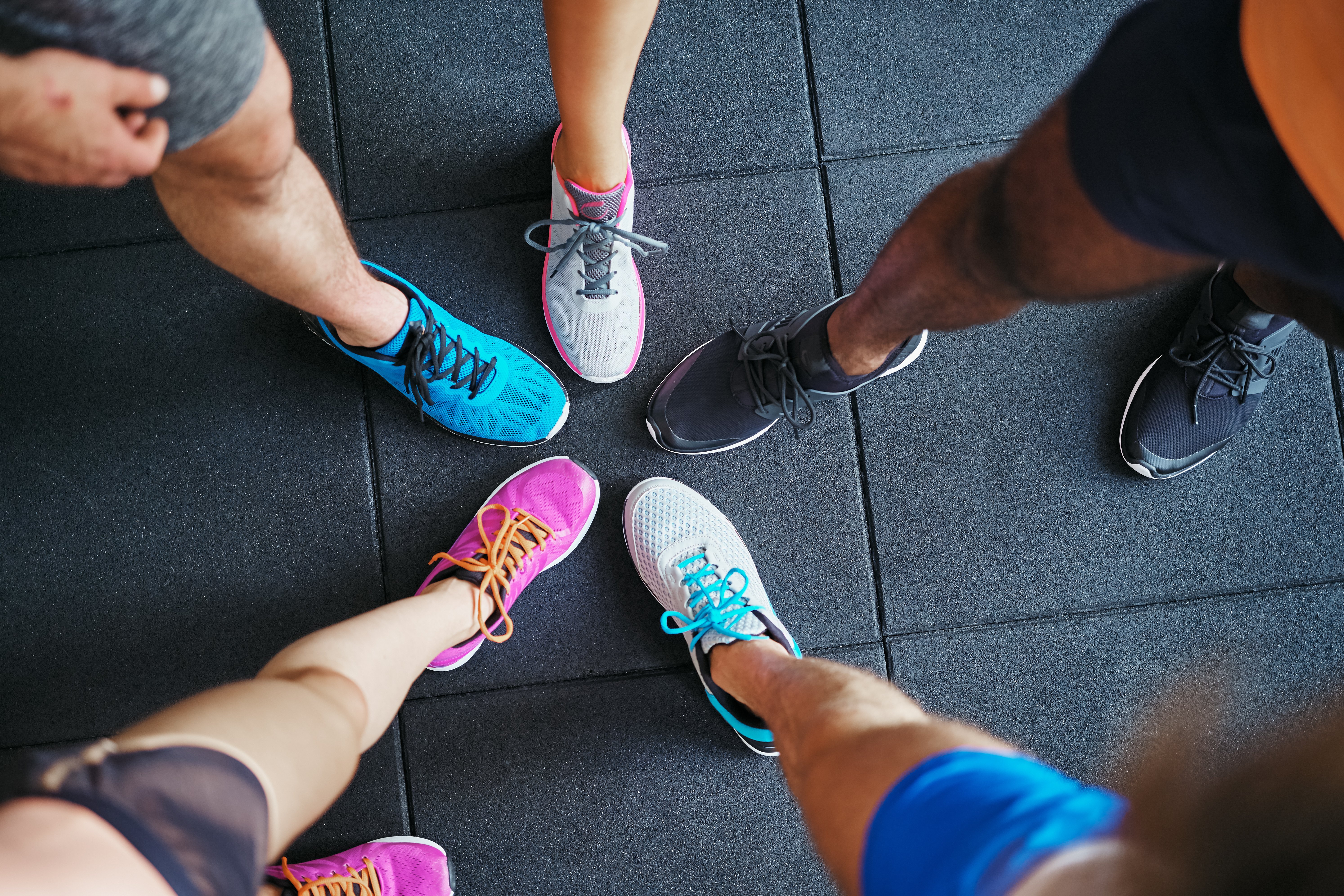The Best Shoes for Every Workout
The Best Shoes for every workout

I love my job as a personal trainer. I enjoy talking about and learning about health and fitness. One of the other things I really enjoy is shopping. It’s a perfect combination when I can talk about what to wear when you are working on your fitness, especially shoes! First, I want to acknowledge it is a privilege not everyone has to be able to take care of one’s health by exercising and to have money to spend on shoes. Shoes for walking, running, weightlifting and other sports can be quite expensive. As I will discuss in this post, shoes can make a difference in preventing aches, pains and even injuries in some cases, however, they aren’t necessary for all workouts. (Swimming and Pilates are just two of the types of exercise you don’t even wear shoes while you are doing them.) Hopefully, this will help in making decisions on when it is best to invest, if you can, on quality shoes for the activity you are doing.
Why do shoes matter? Shoes don’t just look good; they protect our feet and our bodies. They help provide stability, provide cushioning to reduce impact on your joints and help to prevent injuries by correcting any foot issues that affect your body’s alignment like overpronation or flat feet. Old shoes or shoes that aren’t the right fit for you or your activity can cause:
-foot, knee or hip pain or injuries
-back pain
-blisters
-plantar fasciitis
-tendonitis
-falls
Of course, these things can be a result of other issues as well, but making sure your shoes aren’t the cause is a good thing to check.
Take the time to find the perfect fit. A poor fit may cause blisters or damage to your toenails. Make sure there is plenty of room for your toes to move around in the shoe. A shoe not fitting well could even change your gait which may cause knee or other pains. Part of the job of shoes is to absorb impact as we walk or run, but the wrong shoes (or no shoes) can throw the whole body out of alignment when doing these things or even when standing. If shoes don’t have enough padding or don’t allow for an even stride (when walking or running especially) pain is an almost inevitable side effect. The ankles, knees, hip joints and lower back are all affected by shoes without enough support or the right support for your feet.
Not all shoes are created equal and not all feet are built the same. Every brand of athletic shoe has quite a few different styles. For example, the shoe brand Hoka has different styles of shoes for walking, hiking, road running, trail running, training/gym, lifestyle, comfort/recovery and more. Within each of those categories, there are different styles that not only look different, but they are also built differently with different components, different support, and different heel drops. For example, in the walking category they have the Clifton, Bondi, Transport, Transport GTX, Arahi, Gaviota, and Challenger. Each of these walking styles is created and built differently for different types of feet. Each style has a number after the style name. For example, the Clifton 9 is the ninth version of the Clifton walking style of Hoka shoe. Each version of the shoe may have updates and changes. If you had the Clifton 8 and loved it, you can’t be positive you will also love the Clifton 9 because the changes they made may not work for your feet. Most shoe brands will have a quiz on their website to help you narrow down the style that will work best for you. Going into a running store or sporting goods store is a good idea if you aren’t sure what you need. They usually have knowledgeable associates that can watch you walk or run and see what type of shoe will work best for you. Then you can try on different brands and different styles to find what feels best to you. My favorite shoe store in the Indianapolis area is Runner’s Forum. (You don’t have to be a runner to get shoes there!)
Walking shoes and shoes when you are going to be on your feet for long periods of time should be well-cushioned and offer a good amount of support on your forefoot and heel.
Hiking or Trail Running? It may not be a great idea to wear your everyday shoes out on the trails. Hiking boots and shoes all have grippy outsoles for slippery terrain, a harder/thicker bottom to protect your foot from any rocks you may step on, plus some have extra ankle support to prevent ankle rolling when surfaces are uneven.
Flat shoes with little to no cushion are best for weight training so you can feel your feet against the floor to provide a solid base of support when squatting or doing deadlifts. Too much cushion or high soles that are common in running shoes can make pushing through your entire foot during a squat difficult. A running shoe can also make side to side movements difficult and may even make you feel unstable while doing these activities. Training shoes with a sturdy and durable sole with little padding are great for aerobics and HIIT workouts as well. These shoes will either be labeled in a training or cross training category.
When doing activities like Pickleball, tennis or volleyball, look for a shoe that supports moving back and forth and side to side with a good tread and that isn’t too heavy. Look for styles that are specifically designated for these activities.
How long do shoes last? There are a few factors involved when considering how long your shoes will provide good support. How long you have had them, how much you have worn them and how they are constructed all are a few of things that play a role in determining when it is time to get new shoes. Running shoes are said to last around 300-400 miles or 6 – 12 months. It depends on your gait (if you overpronate, you will notice the sole of your shoe is worn unevenly if you don’t have enough support), the type of shoe and how you’ve cared for them. Also, the internal cushioning of your shoes breaks down over time, even if you aren’t using them every day. If you can’t remember when you bought your shoes because it has been so many years, or if you notice significant wear on the soles of the shoes, it is time to replace them. Another thing to watch for, if you start to feel aches and pains in your feet, knees, or hips that you haven’t before, it may be time for a new pair of shoes.
It’s worth it to invest in a good fitting pair of shoes specific for your workout of choice. Not only will they help you feel better and prevent aches, pains, and injuries, they may even improve your performance.
Topics: LivRite News


